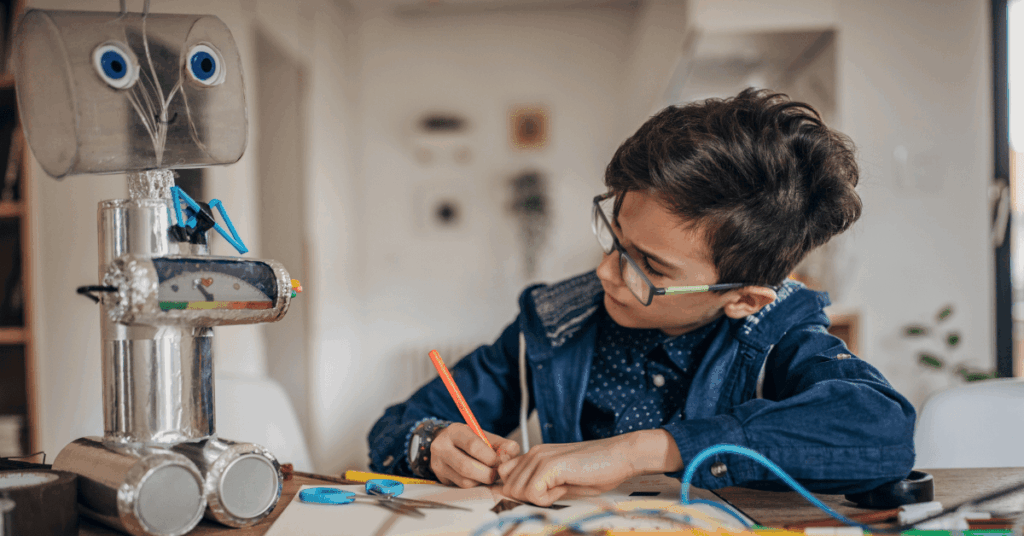What is STEAM?
You’ve probably noticed your children are interested in video games, building or taking things apart, curious about how objects work, how things are made in factories, or how they can protect the environment. All those interests have STEAM traits meaning that when they think about and put those ideas into practice, they’re developing skills in science, technology, engineering, and mathematics.
STEAM is an acronym in English that brings together Science, Technology, Engineering, Art, and Mathematics into a single project.
When did it start?
STEAM originated in the United States in the 1990s as a way to bring students of all educational levels closer to scientific careers and to encourage girls to see these disciplines as part of their future learning paths.
Why is it important?
STEAM education for your children promotes finding solutions to global and local problems by integrating the five disciplines into one approach. The goal is for your children to develop thinking skills to become more critical, creative, expressive, and aware of the resources they have and how to use them without harming the environment or other people.
How can I do STEAM activities?
- Observe your surroundings and reuse materials to create. You don’t need expensive kits to start hundreds of projects at home. You can use recycled or second-hand materials it’s the best option.
- Awaken your creativity. Focus on finding simple solutions to everyday problems. Follow your curiosity. Start at home see if you can make a new soap dispenser, build a towel basket from different materials, or sync your phone with an app to control the lights.
- Stay flexible with your children’s interests. When they come up with an idea for a solo or family activity, ask what they want to achieve and support their ideas as long as it’s safe for everyone.
- Listen to your children. Pay attention to what they say, how they tell their stories, and who’s involved. Remembering details helps them feel you’re there to support their activities.
- Connect with what they love. Take interest in current trends and explore the positive aspects of what captures their attention.
- Talk about the environment. From time to time, ask them what they imagine the world will look like in 5 or 10 years and how they’d like to take care of their surroundings.
- Ask questions. Use open-ended questions to boost creativity for example, how could you save water, use electricity more efficiently, or eat more naturally at home?
- Do projects together. From those questions, you can plan long-term home projects like creating a rooftop garden, saving energy, or collecting rainwater. Sometimes these projects can even involve the community for example, organizing proper waste separation among neighbors.
- Use the devices you have at home. Pick an app and start using it daily to improve something that interests you. Then share it with your children they’ll see you engaging with modern tools and can share tips with you.
A type of activity that may strongly attract your children is programming and building robots, which can be done online. STEAM can easily become part of daily life start by observing your surroundings and noticing how much of what you see involves those five disciplines, and how people planned, designed, tested, and improved each thing.
Doing activities that integrate the five STEAM disciplines strengthens family bonds and enhances your children’s learning.
At our school, your children learn by doing, discovering, and creating solutions for the future. They experience active learning that integrates different knowledge areas, helping them develop essential life skills. The STEAM approach is present in hands-on labs, applying knowledge to real-world situations.


